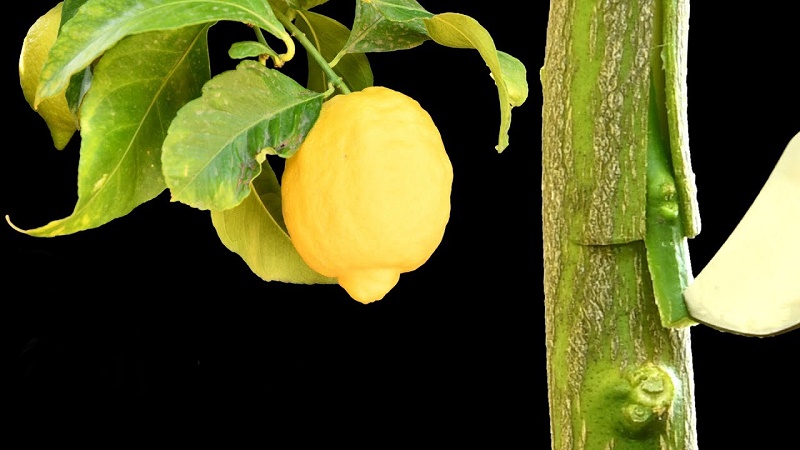
The lemon tree is one of the fruit trees most often found in the gardens of houses and villas. Not in vain, it is the tree of lemons, a fruit that, while it is true that it is rare to be consumed by itself, is one of the most common dressings and ingredients in many dishes of Mediterranean food. Lemon juice can be used in many dishes, from salads and rice to meat and grilled fish, which enhances the flavor of any ingredient and improves it.
However, if you have little space in your garden to have your own lemon tree that gives you this much-appreciated fruit, one of the available options is to gather several plants in one. It is achieved thanks to the grafts. If you want to know how to graft a lemon tree.
What is a graft and how to graft a lemon tree?

The graft of a plant or tree is a part of a plant of a specific species that joins another plant of a different species by a technique that allows, being physically a single plant, each part of said plant is composed of different species. This is achieved by preparing the plants for this and, although not always achieved, it is a technique that is not particularly complicated, so, if done well, it is most likely that the graft will adhere to the main plant and develop normally.
We can do the technique of grafting one plant on another in different ways. However, the most common of all is to take a branch of medium size that has buds (ie, small buds that show the good health of the branch), take the main plant. Place the branch of the first floor so that the two open wounds of each of the plant’s scars together.
To ensure that we have placed the graft grass correctly. You should secure it with insulating tape or similar restraint to prevent the branch of the new plant from moving or falling. In this sense, the support must be firm but soft enough not to strangle the graft. If all goes well, the plants will merge at that point, their barks will unite as one skin, and the wound will lead to vessels connected by which the sap of the main plant feeds the grafted plant.
When to graft a lemon tree?
To carry out the grafting of a lemon tree in another plant, as well as to perform any grafting, the steps described in the previous section must be followed. However, when dealing with a lemon tree, it will be necessary to take into account a series of aspects that will make the grafting more successful.
One of the first element that must be evaluated is the era in which the graft is carried out. This process is trauma or a strong change for the plant, so it can suffer in an important way. Therefore, it is important to do it at the time of year when the plant or tree is stronger and has greater defense capacity. In this sense, the best option is to do it at the beginning or the middle of the spring, which will be the moment in which the grafting of the plant will have the greater capacity to take root and to prosper.
Likewise, we must also bear in mind that, to graft a lemon tree on another tree or plant, it will be better to choose similar plants or trees, since their sap and particular characteristics will facilitate the development of the lemon tree in a strong and healthy way. In this way, although the grafting of a lemon tree can be attempted on any tree, it is advisable to do it on an orange tree, mandarin, lime or grapefruit.
Benefits and properties of lemon for health

As mentioned, lemon is a fruit that is not usually consumed on its own. This is because it is a very acid fruit that makes it unpleasant if taken directly. However, used as a complement to meals, whether you use your juice or if it is sliced, it brings a very good flavor to all kinds of dishes, from vegetable dishes to meats or fish. In addition, beyond its ability to enhance any flavor, it is a fruit that has effects and properties highly recommended for health, so it is worth remembering some of them.
On the one hand, among the properties and benefits of lemon for health, it is important to mention the ability of the lemon to alkalize the organism. When we consume lemon juice with any other food or diluted in water with sodium bicarbonate, we get to increase our pH, which helps fight diseases of all kinds and increase our defenses naturally.
Lemon is a very important source of healthy micronutrients for our bodies, among which we can mention vitamins and minerals. In this sense, lemon is a source of vitamins such as C. In addition to minerals such as potassium, zinc, magnesium or phosphorus among others. It is very complete food that should not be missing in any diet you want to consider healthy.
